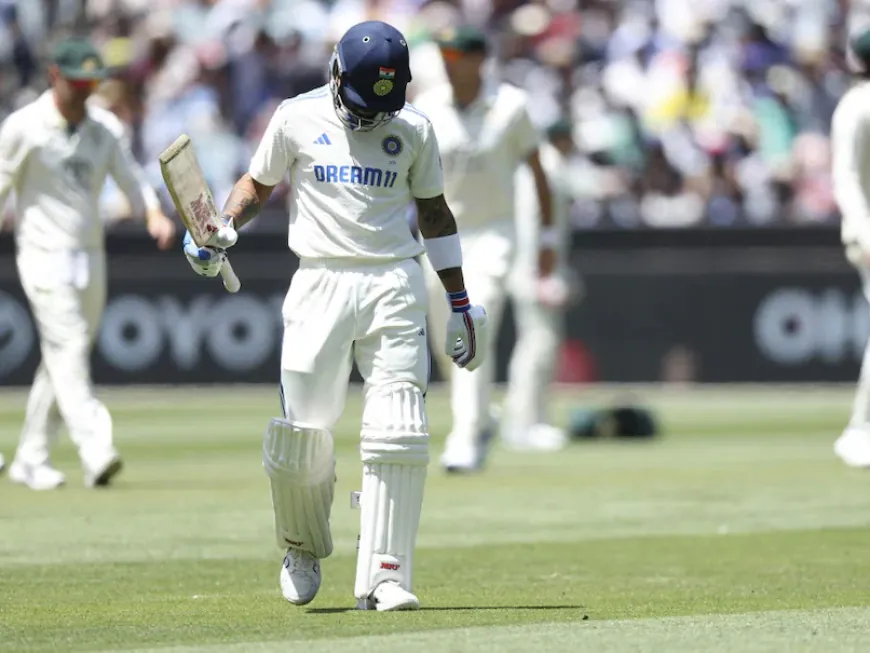India's First Innings in the 2024-25 Test Season-A Tale of Missed Chances
A critical analysis of performances, strategies, and the lessons learned from a season of lost opportunities is reflected in India's first innings in the 2024-25 Test season.

India's Test season in 2024-25 has been going along with first-innings failure. Such is the nature of its batting that it seems to fail consistently, which had translated into disappointing performances in key games. The figures of this season have been nothing but a chain of low scores that reveal deep-rooted flaws in India's batting approach.
A Season of Low Totals
India's first innings score at Sydney in the fifth Test against Australia on January 3, 2025 was 185. This did point to the overall weakness in the team. The score happens to be only the second-lowest by any team at Sydney since 2001, although what Australia achieved back in 2010 against Pakistan by scoring 127 was not that much better either.
India have been bowled out for less than 185 runs in each of the innings eight times through the season in their first inning. This very poor record corresponds to the previous record held jointly by five others teams who witnessed the most single Test seasons witnessing such low total. The failure of batting forces a huge load on the shoulders of bowlers and, frequently, left Indians chasing games.
Unimpressive High Points
Even the record first innings score of 376 in Chennai shows the problem with the team. It is not impressive at all, as compared to earlier records and it has left India at a vulnerable position. West Indies are the only side which, in the 2000-01 season, failed to cross 400 runs in first innings during any Test season comprising ten or more matches.
This further elucidates the issue as the batting average in the first innings. Here, the average was only 18.74 runs per wicket, the lowest by any team in the first innings of a Test season with five or more matches played. Overall, it averaged 22.92 for the match, the lowest average by any team playing ten or more matches in a season.
No contribution from the Top Order
One of the main causes for India's abysmal batting has been the inability to make runs through top-order batsmen. Indeed, in all ten Tests, not one batter in the top seven could score a hundred in the first innings. Two first-innings hundreds have been scored by lower-order batsmen: Ravichandran Ashwin in Chennai against Bangladesh and Nitish Kumar Reddy in Melbourne against Australia, batting at No. 8.
Virat Kohli’s struggles encapsulate the broader issues faced by the top order. With a batting average of just 12.6 in the first innings, Kohli recorded the lowest average for a top-seven batter in a Test season, for players with at least ten innings. This is a steep decline for a player of his caliber, and the comparison to David Boon’s 12.66 average in the 1994-95 season underlines the magnitude of this underperformance.
Role of Leadership and Captaincy
Captain Jasprit Bumrah too, was under pressure. The highest score that he scored in the series was 22; this is an alarming sign for India as none of the batsmen had made any contributions from the top. This score is the second-lowest highest score by an Indian captain in a Test series with at least seven innings. Bishen Bedi, while playing in the 1976-77 series against England, had scored 20*. In such statistics lie the weight Bumrah carried-both as leader and as bowler.
Good Times in Poor Times
Bumrah has bowled this series wonderfully. Bowling has been very good, although batting has not. Since 2002, Bumrah has cleaned out the openers of the opponents 11 times. He is on par with legend Shane Warne during the 2005 Ashes series and Stuart Broad of the 2019 Ashes.
This freakish individual brilliance by Bumrah or resistance at the lower order was just not good enough to redeem the overall batting problem of the team.
Lessons and way forward-
The most trying period for Indian cricket has been the 2024-25 season, during which the team has failed to get out of a poor first innings. Some of the common factors include failure from the top order and a lack of being able to convert starts into substantial scores.
Issues on the cards will be multilateral in approach. There is a need to emphasize partnership building, build resiliency of the top-order batsmen, and help the team cash in on the correct conditions prevailing. The leadership group-the captain and coaching staff will have to give a sense of purpose and focus to navigate the challenges associated with international cricket.
Conclusion
In conclusion, the Indian Test season 2024-25 is more of a reminder of unexploited potential. Though the players have talent that cannot be denied, converting this talent into consistent performance will be important for India to regain their glory at the world level.





















































